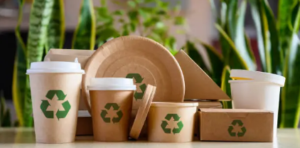In the picturesque landscapes of New Zealand, a wave of consciousness is sweeping through the packaging industry. As consumers undeniably become increasingly aware of their environmental footprint, businesses are pivoting towards sustainable packaging solutions.
Why Sustainable Packaging Matters
 Sustainable packaging significantly refers to the use of materials and amazing design techniques that minimise environmental impact throughout a product’s lifecycle. Unlike traditional packaging, which often ends up in landfills, sustainable packaging one stop shop in New Zealand is designed to be recycled, composted, or reused. This shift is crucial for New Zealand, a country renowned for its pristine landscapes and commitment to environmental conservation.
Sustainable packaging significantly refers to the use of materials and amazing design techniques that minimise environmental impact throughout a product’s lifecycle. Unlike traditional packaging, which often ends up in landfills, sustainable packaging one stop shop in New Zealand is designed to be recycled, composted, or reused. This shift is crucial for New Zealand, a country renowned for its pristine landscapes and commitment to environmental conservation.
The Rise of Sustainable Packaging Practices
A combination of consumer demand, government initiatives, and corporate responsibility has propelled New Zealand’s journey towards sustainable packaging. With the evident growing awareness about the detrimental effects of plastic pollution on marine life, there’s been a significant push for alternatives to single-use plastics.
Businesses across the country are embracing innovative solutions such as biodegradable packaging, compostable materials, and recycled paper products. By adopting these practices, companies not only effectively reduce their carbon footprint but also align themselves with the values of environmentally-conscious consumers.
Government Support and Regulations
The New Zealand government has played a pivotal role in promoting sustainable packaging practices. Through policies aimed at reducing plastic waste and increasing recycling rates, policymakers have created a supportive environment for businesses to embrace eco-friendly alternatives. For more sustainable packaging, one stop shop, click here.
One such initiative is the Waste Minimisation Fund, which significantly provides funding for projects aimed at reducing waste and promoting recycling. Additionally, regulations such as the Waste Disposal Levy incentivise businesses to minimise their reliance on non-recyclable materials.
Innovation and Collaboration
Innovation lies at the heart of New Zealand’s sustainable packaging revolution. From startups to established corporations, businesses are investing in research and full development to create packaging solutions that are both environmentally friendly and cost-effective.
Collaboration between industry stakeholders, government agencies, and environmental organisations has also been instrumental in driving progress. By sharing knowledge, resources, and best practices, these partnerships foster a culture of sustainability that benefits both the economy and the environment.
Consumer Awareness and Demand
Perhaps the most significant driving force behind the adoption of sustainable packaging one stop shop in New Zealand is consumer demand. Today’s consumers are more informed and conscientious than ever before, and they’re actively seeking out products that align with their values.
In New Zealand, this shift in consumer behaviour has significantly prompted businesses to rethink their approach to packaging. From food and beverage companies to e-commerce retailers, brands are effectively responding to the demand for sustainable alternatives by redesigning packaging, sourcing eco-friendly materials, and implementing recycling programs.
Challenges and Opportunities Ahead
While significant continuous progress has been made, challenges remain on the path to achieving widespread adoption of sustainable packaging practices. One of the primary obstacles is the cost associated with transitioning to eco-friendly materials and processes. However, as technology continues to advance and economies of scale are realised, the cost differential between traditional and sustainable packaging is expected to narrow. For more sustainable packaging, one stop shop, click here.
Another challenge is the need for infrastructure to support recycling and composting initiatives. Increased investment in waste management facilities and education programs will be essential to ensure that sustainable packaging is effectively recycled and processed.
Despite these challenges, the future of sustainable packaging in New Zealand is bright. As awareness continues to grow and consumer preferences evolve, businesses will have even greater incentives to embrace eco-friendly solutions. By working together towards a common goal of environmental stewardship, New Zealand can lead the way in sustainable packaging innovation.
Conclusion:
In the lush landscapes of New Zealand, the shift towards sustainable packaging is not just undeniably a trend; it’s a movement towards a greener, more resilient future. With government support, industry innovation, and consumer demand driving change, businesses are increasingly adopting eco-friendly alternatives to traditional packaging materials.
By embracing sustainable practices, New Zealand is not only protecting its natural beauty but also setting an example for the rest of the world to follow. As we look towards the future, let us continue to prioritise sustainability and preserve the breathtaking landscapes that make New Zealand genuinely unique.